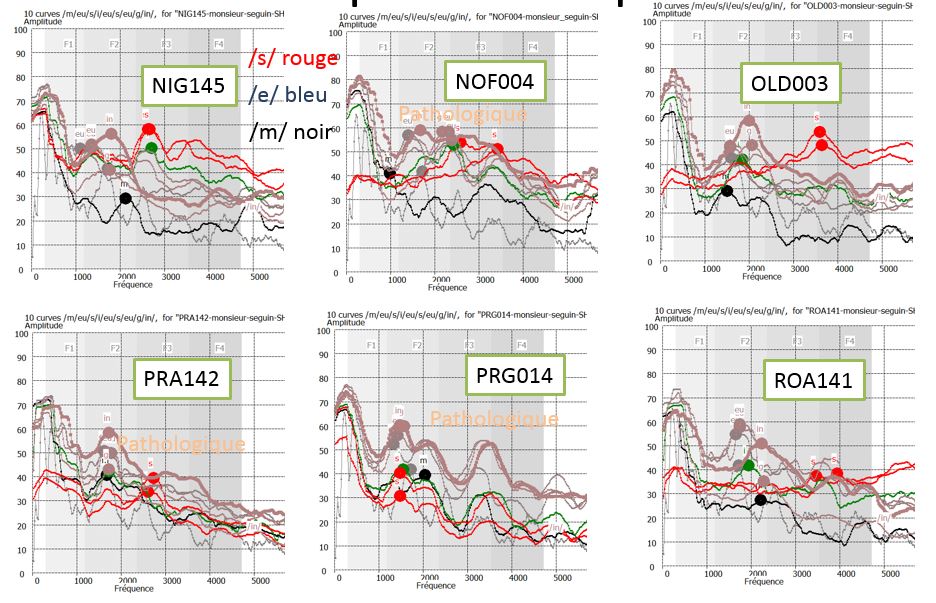Characterizing Pathological Voices
Context
The SAMoVA research team is contributing to the analysis and characterization of pathological voices through three main projects:
- The Carcinologic Speech Severity Index (C2SI): a Speech Disorder Severity Index to measure the impact of oral and pharyngeal cavity on speech production, in partnership with CHU Toulouse, LPL Aix-en-Provence, PETRA MSH Toulouse, URI Octogone-Lordat Toulouse, Université d’Avignon et des Pays de Vaucluse & Université Paul Sabatier, Unité de soutien méthodologique à la recherche Toulouse (Learn more…)
- The Voice4PD-MSA: Differential diagnosis between Parkinson’s disease and Multiple System Atrophy using digital speech analysis, in partnership with INRIA Bordeaux, CHU Bordeaux & CHU Toulouse (Learn more…)
- The CLE PHONICS: Study of transpositon of automatic intelligibility modelling from perception to production (learn more…)

Within the frame of the C2SI project, the voices of 50 patients who were treated for oral and pharyngeal cancer as well as normal speakers were studied using different acoustic parameters, coupled with automated speech recognition. The protocol includes the sustained /a/, the reading of a text (“Monsieur Seguin” from A. Daudet), pseudo-words, task descriptions, etc. Each patient and normal speaker is evaluated using standard or experimental protocols including Speech Handicap Index, Voice Handicap Index, Speech Intelligibility, etc. Speech recognition tools such as HTK are used to evaluate the likelihood score.
Results
As part of his Master Degree internship (2016), Brendan GLOINEC [1] studied voice records of sustained vowel [a] and text reading. He found several accoustic parameters that could be linked with the Severity Index. However, the final results did not clearly highlight accoustic feature that correlate well with the Intelligibility.

The study revealed, by comparison with a control group, significant harmonic poverty on sustained /a/ as well as on read text, as well as a spectral degradation of vowels and consonants, in particular in the areas of formants F2 to F4, correlated with intelligibility and misalignment on a set of pseudo-words. However, the study does not reveal any significant difference in the histogram of the fundamental of the voice between the control and patient groups. The distance between /s/ and /m/ consons in terms of frequency and power distance was found to be significantly correlated withintelligibility scores [2].
Researchers
- Jerome Farinas IRIT / SAMoVA Researcher
- Julie Mauclair IRIT / SAMoVA Researcher
- Julien Pinquier IRIT / SAMoVA Researcher
- Etienne Sicard IRIT / SAMoVA Associated Researcher
Publications
- Gloinec B. (2016), “Development of Methods to Characterize the Intelligibility of Patients Recovering from Throat Surgery”, Master Report, INP-ENSEEIHT, Sept. 2016
- Sicard E., Mauclair J., Woisard V. (2017), “Study of acoustic parameters of the voice of patients treated for Oropharyngeal Cancer within the C2SI project”, proposal to 7èmes Journées de Phonétique Clinique JPC7, June 29-30, Paris

